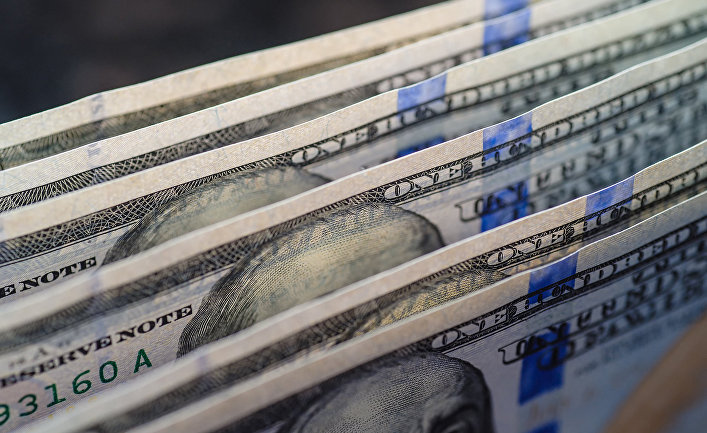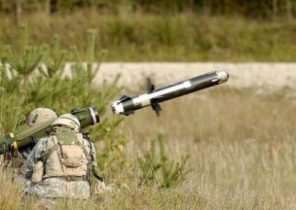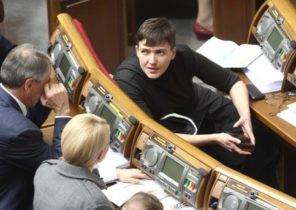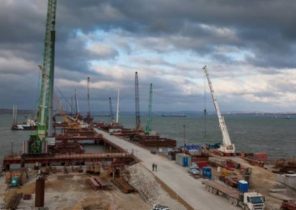
During his election campaign, Donald trump called the US economy “economic disaster Obama.” As they used to say the late Senator from new York Daniel Patrick Moynihan (Daniel Patrick Moynihan): “everyone can Have their own opinion, but not their own facts.” And the economic facts mercilessly testify against trump statements.
Economists try to not overly praise or blame American presidents for the economy because prosperity depends more on luck, history and long-term consequences of government policy than the use of any President of the limited tools of economic management. However, there is a lot of data that can be used to determine how much improved (or not improved) the economy during the presidential terms of three Democrats and three Republicans occupied the White house since 1976.
To change national economic indicators, you can resort to the existing standards. Here are 14 who have collected Bloomberg, which are widely tracked and measured a wide range of economic activity, labour market and wage growth to the strength of key sectors, such as real estate and automobile industry, the state of the stock and bond portfolio, ensuring the financial security of working people and retirees:
— employment in non-agricultural sector
— manufacturing jobs
— the value of the dollar against major currencies
— GDP
— the deficit (or surplus) the Federal budget as a percentage of GDP
— disposable income per capita
— household debt as a percentage of the single income
— equity
— hourly earnings
— productivity
activity in the bond market
index Standard & Poor’s 500 for U.S. exchanges
— the gap between the performance of the American and world stock exchanges
Comparing and measuring the annual growth of each of these parameters in each of the last six presidents, it becomes possible to determine an average indicator of the overall economic progress. When calculating each measure has equal weight, so if you believe that some deserve more attention because of their importance, you will have to present their claims to the method. But still it is a reasonable method, though, and rather rough.
By that standard, the economy has grown the most in the period from 1993 to 2000, when the presidential chair was occupied by bill Clinton, and then during the reign of Obama, from 2009 to 2016. So whatever you may think about the political actions of Obama, the American economy showed the best results when he occupied the White house than in all the rest of his recent predecessors.
Assessment of the well-being of the US economy (the economy in the period from 1977 to 2016)
Clinton
Obama
Reagan
Bush
Carter
Bush Sr.
the S&P 500 index
1
3
4
2
5
6
the gap between the performance of the American and world stock exchanges
2
3
6
1
5
4
employment in non-agricultural sector
2
4
3
5
1
6
disposable income per capita
2
5
1
6
3
4
household debt relative to income
6
1
5
3
1
4
GDP
1
6
2
4
2
5
Deficit GDP
1
2
4
5
3
6
equity
4
2
3
5
1
6
bonds
3
5
1
2
6
4
the value of the dollar
2
1
3
4
6
5
the industrial sector
2
4
3
5
1
6
auto industry
3
1
2
4
6
5
hourly earnings
2
1
4
5
6
3
productivity
3
5
4
1
6
2
Rating
1
2
3
4
5
6
Bill Clinton was campaigning with the slogan: “It’s the economy, stupid” and received the best annual result in the S&P 500 index and the best indicator of GDP growth. His years in the White house also coincided with the second place in the indicators of the annual growth of non-agricultural sector, income per capita, the value of the dollar, manufacturing jobs and hourly wages. Clinton is the only President who has turned deficits into annual surpluses.
Obama took office during the worst recession since the great depression, when the economy was losing 750 thousand jobs a month and have already lost a record 9% of GDP. He completed his two term with the largest annual growth in the value of the dollar, the highest rate of reduction of the debt of the population relative to income, the largest growth of sales in the automobile industry and the hourly pay. His stay in office coincided with the second indicator of the level of own capital and is second only to the reign of Clinton’s deficit reduction as a percentage of GDP. With a slower annual growth of non-agricultural sector under Obama compared to the reign of Jimmy Carter, bill Clinton and Ronald Reagan, for 75 months, they demonstrated continuous growth, which is the longest period of growth since February 1939.
The worst performance at the moment distinguished the reign of Governor Clinton to George W. Bush, whose presence in the White house ended with the worst financial crisis since the great depression. The crash of 2008 turned the economy into reverse, which resulted in the overall decline of stock indices, home value, sales in the automotive industry, the anemic labor market and GDP growth. However, even before the recession began in December 2007, economic activity was lower than in the other five presidents. The stock indexes was slower growth in non-agricultural sector was the worst, and the growth of private capital — in the penultimate place.
Economic growth in six US presidents
(the annual interest rate for held in the position period of time)
Clinton
Obama
Reagan
Bush
Carter
Bush Sr.
the S&P 500 index
17,2
14
9,3
16
6,2
-3,3
the gap between the performance of the American and world stock exchanges
5,3
3
-5,9
15,5
-3,4
-1,7
employment in non-agricultural sector
2,4
0,9
2
0,6
3,1
0,2
disposable income per capita
2,4
1,2
2,6
1,1
1,7
1,6
household debt relative to income
0,2
-0,4
0,2
-0,3
-0,4
0,1
GDP
3,9
1,3
3,4
2,4
3,4
2,1
Deficit GDP
0,9
0,2
-0,1
0,6
-0,2
-0,9
equity
6,6
9,5
9,1
2,1
17,1
-1,7
bonds
7,1
3,9
13,4
11,7
2,3
5,7
the value of the dollar
2,3
3,2
0,3
-1,1
-3,4
-3,3
the industrial sector
0,3
-0,6
-0,4
-1,8
1,3
-3,6
auto industry
1,9
7,6
5,2
-4,3
-6,8
-5,3
hourly earnings
0,8
0,9
-0,3
-0,9
-1,7
0,4
productivity
2,1
1,3
1,8
2,6
0,7
2,2
On the penultimate place in terms of growth — time of one-time stay of the Carter presidency from 1977 to 1980. These years saw the most significant decline in the dollar, sales in the automotive industry, the reduction of hourly wages and the smallest increase productivity. Despite all these setbacks, there were some glimmers of economic growth. During the reign of Carter there was a significant annual growth in non-agricultural sector and the second on indicators of annual GDP growth, the biggest increase of own capital and jobs in the industrial sector.
The improvement in the economy from 1989 to 1992 under George H. W. Bush was only a little busier than during the reign of Carter. This period was marked by the slowest growth of income per capita, in the penultimate place were the indicators of development of agricultural sector. Shareholder equity grew minimally, while hourly wages fell. Even after a politically risky tax increase to improve the chronic budget deficit (this step cost him the support of Republicans to the nomination for a second term), he received second place in the graph of deficit reduction. However, the stock market experienced a boom, and the S&P 500 index grew faster than all the other presidents except Clinton. After recovering from the 1987 crash, the U.S. markets ahead of the MSCI World index by the largest margin over a 40-year period.
After the election of Reagan in 1980 has been the worst recession in the period since the Second world war until the financial crisis of 2008. Thanks to the amazing recovery of the 40th President of the USA took third place for development in the period under review. It had the highest level of annual growth of income per capita, the best indicators on bond market according to estimates of Bloomberg Barclays U.S. Aggregate Total Return Value Unhedged USD. The economy Reagan followed Carter, finishing in second place in terms of annual GDP growth. However, the 1987 crash has jeopardized the activity indices of the world stock markets, which was the worst result since 1976.
So, no, the President-elect trump. No economic disaster under Obama was not.
The facts are hard to argue. Key parameters for the last eight years have been a period of sustained improvement, although at this time and there was no records. Only one of their last six presidents led the United States during the period of greater economic development. It was Clinton, and he paid tribute to Obama because of the situation with the financial crisis.
“President Obama began work at his post with a much weaker economy than I do,” Clinton said in his speech at the nomination at the democratic Convention in 2012. “No President — no, neither I nor any of my predecessors could not fully repair the damage that he managed to do in just four years.”
With the support of Shin Pei (Pei Shin)







